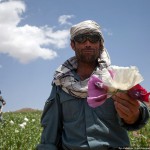- Contribution of pollinator-mediated crops to nutrients in the human food supply. 90% of Vitamin C for a start.
- Foraging behavior of Alberes cattle in a Mediterranean forest ecosystem. It’s a semi-feral breed in NE Spain and its foraging behaviour may well decrease the risk of fires.
- Assessing the impact of the SASA/CASREN technology interventions in the sweet potato-pig production systems in Zitong County (Sichuan, China). All well and good but in this day and age one would expect some exploration of the sustainability of the interventions.
- Proposal for a Kava Quality Standardization Code. Very much needed because poor quality was probably responsible for examples of liver toxicity in the past. This is how to avoid that in the future.
- Clipping stimulates productivity but not diversity in improved and semi-natural pastures in temperate Japan. Semi-natural pastures are more diverse than improved pastures, and can be reasonably productive. So there.
- Pollen flows within and between rice and millet fields in relation to farmer variety development in The Gambia. Depends on breeding system. Likely higher within fields than between. Still no cure for cancer.
- Land, landlords and sustainable livelihoods: The impact of agrarian reform on a coconut hacienda in the Philippines. It seems to be mainly in the mind.
- Genetic divergence is not the same as phenotypic divergence. It isn’t? I’ll alert the media.
- Scope economies and technical efficiency of cocoa agroforesty systems in Ghana. Multi-crop cocoa farms are better, in multiple ways.
- Gene flow increases fitness at the warm edge of a species’ range. Outcrossing between edge populations better for living on the edge than outcrossing within edge populations, outcrossing with a center population or selfing. For a Californian annual anyway. Interesting consequences for in situ CWR conservation, in particular in context of re-introductions. Do we worry too much about “genetic pollution”?
Winning hearts and minds in Afghanistan

Women and children run out into the field. They cry and throw themselves under sticks. A month later, they might have reaped the harvest and sold it. For many of them this money was the only way to survive another year in this godforsaken place.
Nibbles: Breeding, Frankincense and myrrh, Roman pills, Chinese botanic garden, NPGS, Green red bush tea, Old banyan, Terroir, Botanic gardens and invaders, AnGR
- National Organic Coalition suggests USDA’s National Institute for Food and Agriculture separate conventional and participatory breeding from anything involving DNA in considering projects for support.
- Second-guessing the Three Wise Men.
- Yet more on attempts to deconstruct ancient Roman medicines using DNA from tablets found in a shipwreck. Real Indiana Jones stuff.
- Botanic garden and genebank for drought-resistant plants to be established “in Asia’s largest wild fruit forest.” That would be in China. I really don’t know what to make of this. Really need to find out more. But why am I talking to myself?
- Brown (rice) is beautiful.
- Feedback from a genebank user. Kinda.
- Rooibos gets itself certified.
- The oldest cultivated tree on record.
- The taste of Massachusetts.
- “…strongly conservation-minded botanic gardens appear to be in the minority.” Easy, tiger. Will that new one in China (see above) feature in this minority?
- ILRI on an Aussie TV program on conserving local livestock breeds in Africa.
Nibbles: Food Deserts, Garlics, Communication, Bee breeding, Millets, Sweet potatoes, Visualizing herbaria, Medieval beer
- The Economist discovers food deserts. Money quote: “some Americans simply do not care to eat a balanced diet, while others, increasingly, cannot afford to”.
- William Woys Weaver on garlics, and America, and garlic in America.
- Agricultural Communication for Development conference. Sure. But 12 days long?
- Breeding a better bee. And why not?
- Kenya Agricultural research Institute to release three new high-yielding finger millets.
- Too many sweet potato seedlings. What’s a poor breeder to do?
- A visual history of California botanizing.
- Ah, to have lived at a time when a man got most of his calories from beer! No, wait…
Amazonian ethnobotany from the beginning
The main rubber tree, which the British took to Malaysia, was the basis of all plantations. There are nine other plants in that same group from which the Indians once got rubber. But the plantations had started to supply the world with better and cheaper rubber than the Indians had been producing under terrible — almost slave — conditions. So the Indians had three or four generations when they hadn’t tapped wild rubber, and we were sent into the various countries to try to stimulate this for the war effort. I had been in the Amazon of Colombia, so I went right back among my Indians, and I worked on that during the war.
That’s the Father of Modern Ethnobotany, Richard Schultes, in part of a long interview he gave in 1990 for something called the Academy of Achievement. You can read it, listen to it, or watch videos of it. Fascinating.